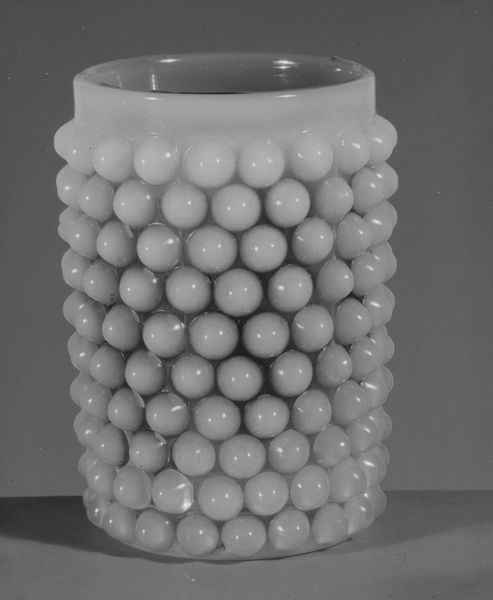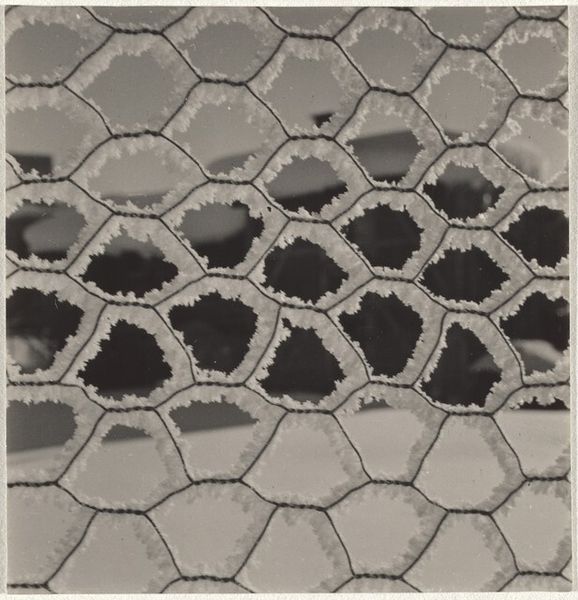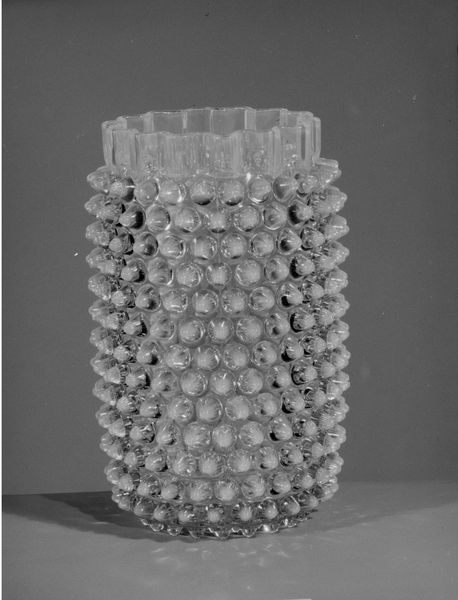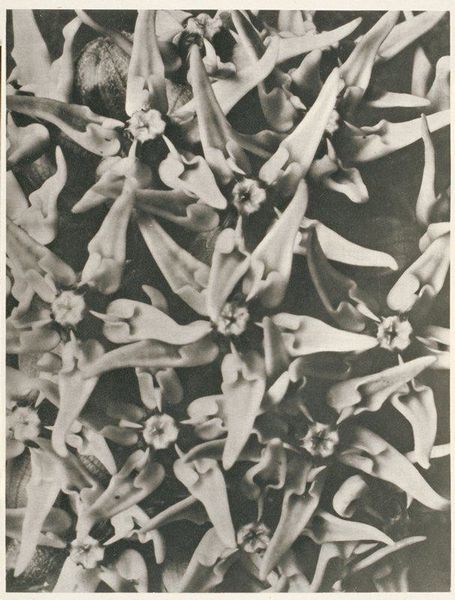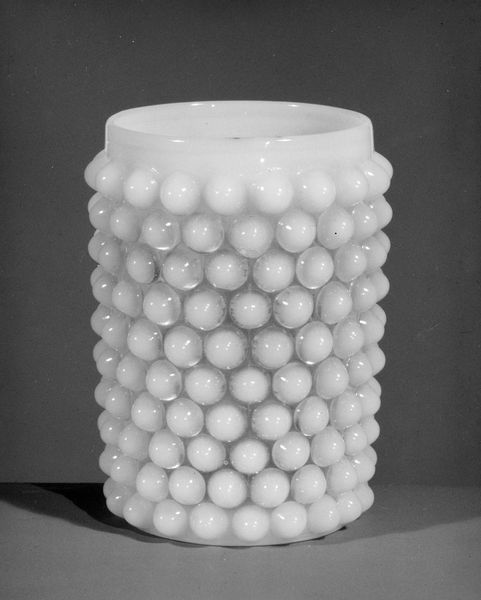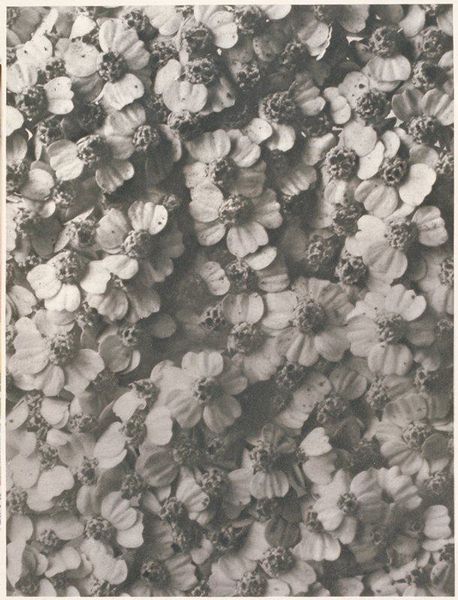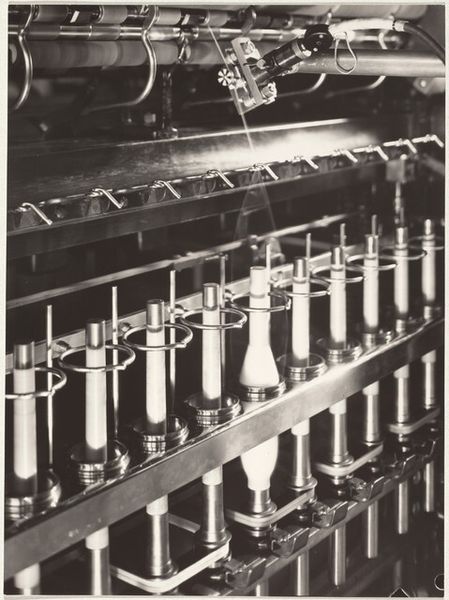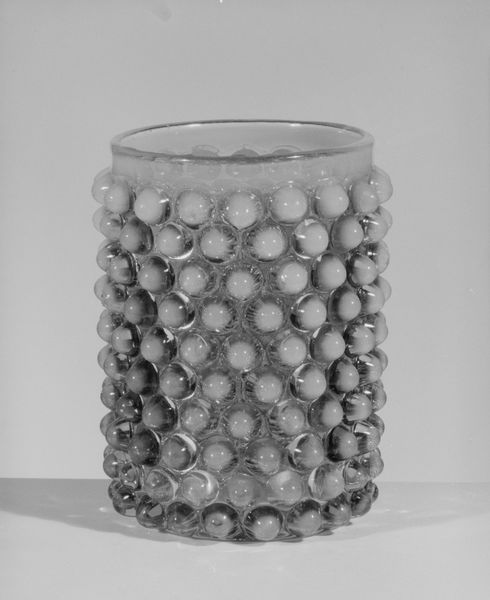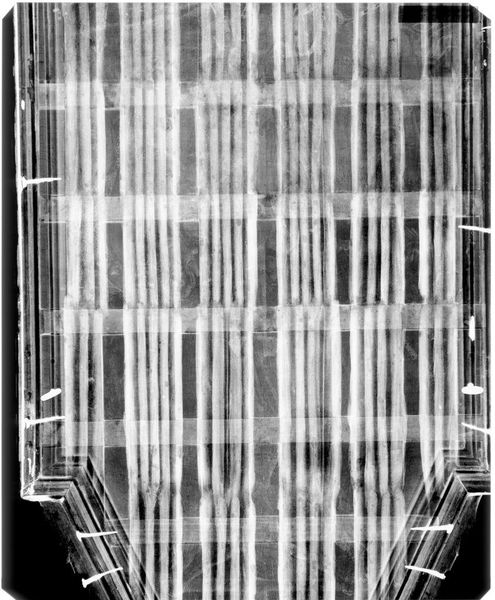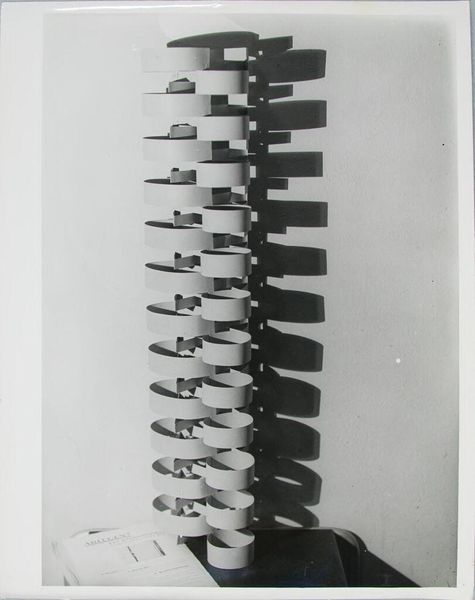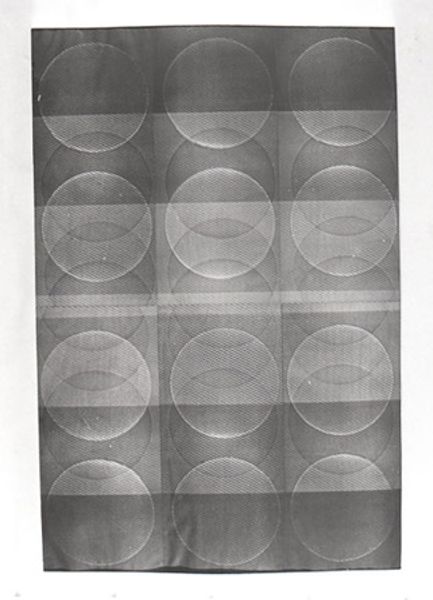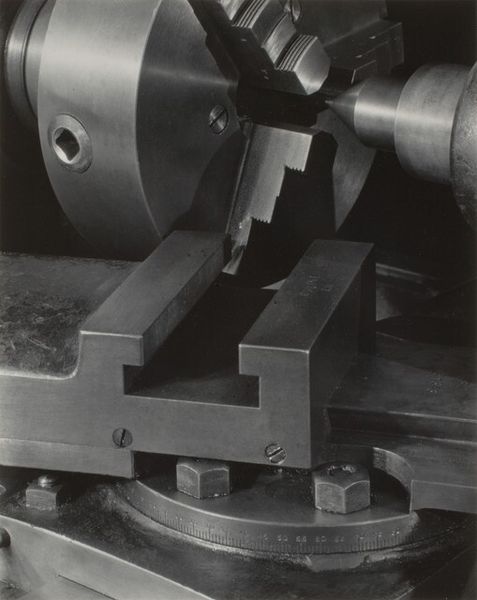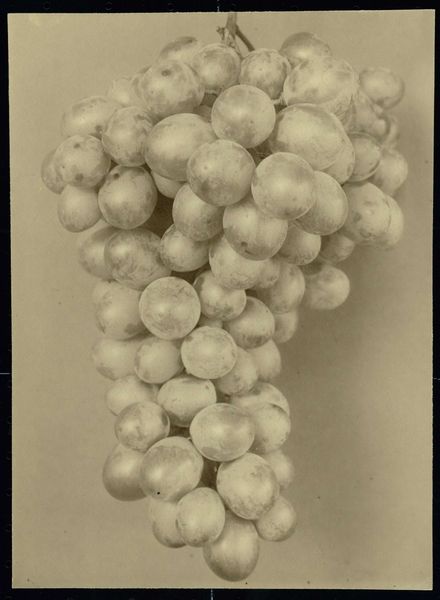
Untitled (Documentation of Harvest for Andersen & Co) c. 1939 - 1940
0:00
0:00
photography, gelatin-silver-print
#
still-life-photography
#
sculpture
#
photography
#
geometric
#
gelatin-silver-print
#
monochrome photography
#
monochrome
#
realism
#
monochrome
Copyright: Public Domain
Karl Theodor Gremmler made this gelatin silver print, "Untitled (Documentation of Harvest for Andersen & Co)", which shows boxes of potatoes stacked high. The composition is a real trip, right? It’s all these gray tones, repeated shapes, and shadows. The potatoes themselves are packed so tight into the boxes, there's a tension between the grid-like structure and the organic forms, the way they spill out and push against their boundaries. If you zoom into one spud, you can see all the little imperfections, the eyes, the dirt clinging on. This piece reminds me of Bernd and Hilla Becher's photographs of industrial structures; Gremmler's work could be seen as a pre-cursor, in its use of seriality and typology, but with a more human touch. It makes you think about how we organize, categorize, and ultimately make sense of the world.
Comments
stadelmuseum about 2 years ago
⋮
Karl Theodor Gremmler belonged to the generation that embarked on their careers after the National Socialist accession to power. He specialized in photos of industrial food production. His customers included the biscuit manufacturer Bahlsen, “Kaffee HAG”, and above all the Hochseefischerei- Gesellschaft Hamburg, Andersen & Co. K. G. Gremmler photographed the products’ entire process chain from the harvest or catch to the packaging. The photo book Men at the Net, published in 1939 on his own initiative, is a detailed portrayal of navigation and fishing. With the aid of harsh shadows, oblique perspectives, and views from below, his scenes of workers in heroic poses were meant to convey the progressiveness of the German food industry. The design principles served the purposes of Nazi propaganda, which generously sponsored advertising measures of this kind.
Join the conversation
Join millions of artists and users on Artera today and experience the ultimate creative platform.
